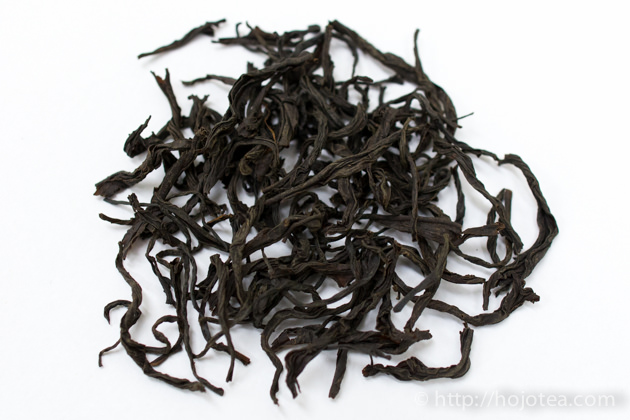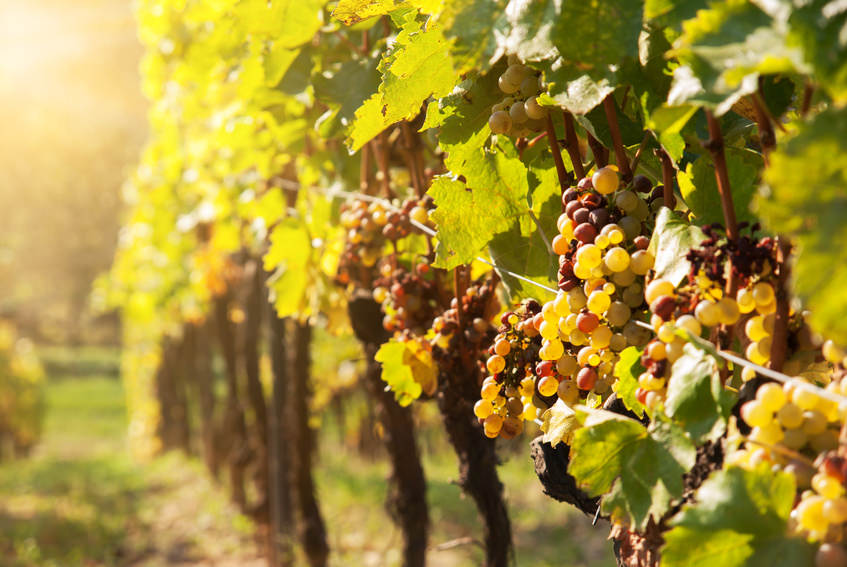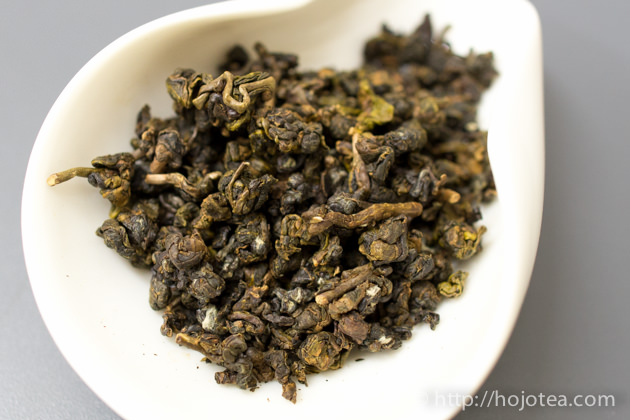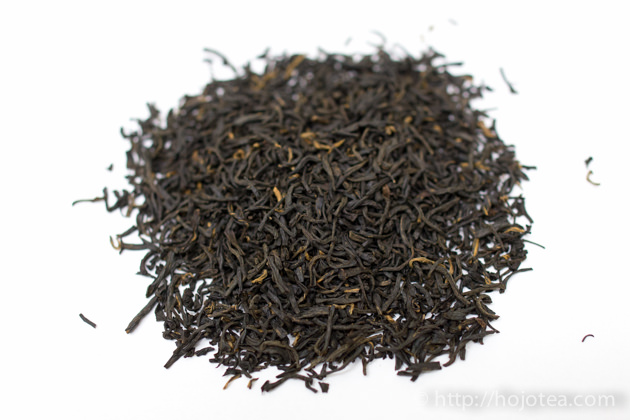- HOME >
- New Arrival at HOJO Online Shop
New Release of 11 Years Vintage Tea Aged in Malaysia
We have just released 4 types of 11 years aged vintage oolong and black tea. These teas were kept at our own warehouse in Malaysia without oxygen. We bought these tea on the year we established our company. Thanks to the tropical weather in Malaysia, teas were matured pretty well, giving very distinctive flavor and typical taste of vintage tea. We only have the limited quantity, less than a few kg each.
Aged 11 years without oxygen
In Taiwan or China, tea is generally aged inside a clay jar. With this method, the oxidation speed is very fast as it is exposed to the air. Hence, In China or Taiwan, tea is regularly baked in order to remove the off-flavor and bring down the moisture. This method somehow develops the baking flavor on tea after repeating it for many years. After sometime, the flavor of tea is not only fruity but also woody, camphor, musty or sometimes tea is giving too much baked flavor. On the other hand, we suggested the aging to be carried out without oxygen. After running the series of experiments, we concluded that this method makes tea aged very ideal. The outcome after keeping tea without oxygen is only to develop sweet and fruity flavor, while the conventional aging develop not only the sweet flavor but also various kinds of off-flavor. In fact, the aging of other food items such as wine, whisky, cheese and ham are also aged without oxygen. The flavor of wine turns sour and produces less attractive flavor if the cork is damaged and oxygen goes inside the bottle.
The aging takes place faster under the tropical weather
Thanks to the tropical weather, the aging of tea takes place so much faster than keeping the same tea in Japan, USA or Europe. Usually the speed of aging in Malaysia is 2-3 times faster than Japan. These 4 types of tea were kept in our warehouse in Malaysia for 11 years. It is equivalent to 20 over years we keep the same tea in Japan.
What is so special about Vintage Tea?
Do you know what so special about the vintage tea is? The long aged tea produces very distinctive flavor and taste. What I was surprised when I tried the well aged vintage tea was its taste. Basically the taste of vintage tea has a lot in common with the taste of vintage wine or whisky. It gives the taste that gives very smooth mouth feel, silky and feel like it is penetrating in my tongue. It is similar to the sensation we are eating cotton candy or sugar alcohol. In addition to the taste, the vintage tea gives very distinctive flavor too. The flavor is like thick ripen with the hint of dried fruit. For example, the vintage oriental beauty gives the flavor like noble rot grapes, while the fresh oriental beauty gives the flavor like muscat.
High Mountain Formosa
After 11 years, tea has developed very thick and sweet fruity flavor. The flavor is overwhelming. It reminds me of the ripen mango or peach. It is impossible to experience this flavor with the freshly produced tea. Thanks to the no oxygen-aging technique, tea has been kept fresh and it gives no stale flavor at all. Of course, it gives distinctive taste of vintage tea too.
100g RM360
Oriental Beauty
It gives the flavor that reminds me of noble rot grapes and also very well made raisin. Usually oriental beauty has a little rough taste due to the reason that oriental beauty is plucked late spring. The vintage oriental beauty gives silky texture and sweetness lingers on our tongue.
30g RM148
Formosa Black Tea
The flavor of fresh Formosa Black Tea is often described as menthol flavor. It is similar kind of flavor as Uva from Sri Lanka. After the long aging, tea is giving very sweet flavor like a brandy. In addition, it gives very smooth texture like silk.
50g RM178
Keemun Black Tea
The flavor of vintage keemun black tea does not significantly differ from the freshly produced keemun. But it gives sweeter flavor like sweet potato or chestnut. Taste is softer and smoother. It also gives sweet sensation on the palate thanks to the long aging effect.
70g RM168
The flavor gets stronger a few days after the bag is opend
Usually I open the bag of tea 2-3 daysbefore going to drink it. The flavor gets stronger when some substances get oxydized. It is the same mechanism as the decanting of wine. However it is not the must to leave it either as tea will naturally oxidized anyway. The flavor of tea when it is freshly opened is good enough.
Please contact shop or e-mail us if you are interested.
Related Articles
How to get the latest update on HOJO Tea?
1. Follow Twitter, 2. Click "Like" on Facebook, and 3. Subscribe in newsletter. You can have the latest tea news from HOJO Tea.
 Subscribe the Newsletter to enjoy the privileges
Subscribe the Newsletter to enjoy the privileges- You may receive a free sample upon purchase, or you may have the priority to purchase special products. So please remember to subscribe our newsletter as well as the social network.
- New Release of High Mountain White Tea
- We are pleased to introduce our High Mountain White Tea, sourced from a unique tea garden with two key features: 1. Located at an altitude of 2200-2300m2. Completely wild and untended The ideal natural conditions of this garden result in tea of exceptional quality, offering a pure and gentle, nourishing taste. High Altitude and Wild …
- New Release of Da Xue Shan Wild White Tea 2024
- We have released the 2024 Da Xue Shan Wild White Tea Loose Leaf. This tea was produced under our direct supervision during our stay in Yunnan Province, ensuring meticulous production management on site. Definition of Wild Tea in Yunnan Province People in Yunnan strongly associate Camellia taliensis with wild tea, regardless of where it is …
NEW ARTICLES
 Why Do Some Teas Taste Astringent? Exploring the Causes and Mechanisms of Astringency
Why Do Some Teas Taste Astringent? Exploring the Causes and Mechanisms of Astringency- Tea can range from having no noticeable astringency to possessing a very strong one. What causes this astringency? This article explores the causes and mechanisms behind astringency in tea. Causes of Astringency Astringency arises from the binding of tea components to proteins in the oral cavity, creating a sensation of tightness or dryness. The tongue …
 The Impact of Heat Sources on Tea Flavor
The Impact of Heat Sources on Tea Flavor- It is widely recognized that the material of a kettle plays an important role in shaping the taste of water for brewing tea. Yet, an often overlooked but equally significant factor is the type of heat source used to boil the water. Different heat sources, whether gas, electric, charcoal, or wood fire, can impart distinct …
 New Release of High Mountain White Tea
New Release of High Mountain White Tea- We are pleased to introduce our High Mountain White Tea, sourced from a unique tea garden with two key features: 1. Located at an altitude of 2200-2300m2. Completely wild and untended The ideal natural conditions of this garden result in tea of exceptional quality, offering a pure and gentle, nourishing taste. High Altitude and Wild …
 New Release of Da Xue Shan Wild White Tea 2024
New Release of Da Xue Shan Wild White Tea 2024- We have released the 2024 Da Xue Shan Wild White Tea Loose Leaf. This tea was produced under our direct supervision during our stay in Yunnan Province, ensuring meticulous production management on site. Definition of Wild Tea in Yunnan Province People in Yunnan strongly associate Camellia taliensis with wild tea, regardless of where it is …
 New Release of Wild Pu-erh Jasmine Pearl
New Release of Wild Pu-erh Jasmine Pearl- Out of curiosity, we decided to create a jasmine tea based on Da Xue Shan Wild Raw Tea. This resulted in an exceptionally rare tea, not only in Japan but also in China. Custom Production Network for Jasmine Tea At our store, we source various types of base teas from different regions during the spring. …
 2024 Overview: Our Yunnan White Tea Quality, Process, and Weather Insights
2024 Overview: Our Yunnan White Tea Quality, Process, and Weather Insights- One of the teas we’ve been focusing on in Yunnan Province is white tea. Historically white tea has been produced in both Fujian Province and Yunnan Province for a long time. While white tea from Fujian Province is well-managed during processing, we are dissatisfied with the quality of the raw materials due to the use …
 Yunnan’s Hospitality Culture: Expressed Through Meals
Yunnan’s Hospitality Culture: Expressed Through Meals- In China, as a form of greeting, it’s common to say “你吃饭了吗?” which means “Have you eaten?” However, in Yunnan Province, the phrase “吃饭” is often used in various situations, more like “Eat, eat,” serving as an invitation to share a meal. Yet, with prolonged exposure to Yunnan, one comes to understand that these meal …
 In Search of Wild Tea: Exploring Mountain Villages in Southwest Lincang, Yunnan
In Search of Wild Tea: Exploring Mountain Villages in Southwest Lincang, Yunnan- We are currently sourcing tea in the southwestern part of Lincang City, Yunnan Province. One of the crucial products for us is wild tea. While tea processing is important, securing the raw materials poses the biggest challenge. Recently, we received information about a new location where wild tea supposedly grows. To verify this, we visited …
 New Release of Anxi Traditional Oolong
New Release of Anxi Traditional Oolong- Anxi, located in Fujian province, China, is celebrated for its Tie Guan Yin tea. However, the Traditional Anxi Oolong from this region boasts a unique fruity aroma, distinguishing it from Tie Guan Yin. Anxi: A Renowned Hub for Oolong Tea Production in China Fujian Province, renowned for its rich tea heritage, boasts several prominent tea-producing …
 Yunnan 2024 Spring Tea Sourcing
Yunnan 2024 Spring Tea Sourcing- Yunnan Province is globally renowned for the exceptional quality of its tea leaves. However, lax production management often presents challenges in achieving the desired tea quality when relying solely on pre-made teas. To address this issue, we have committed to remaining on-site throughout the spring season to closely monitor tea production. We are meticulously inspecting …
Shop Info

Address:Lot No. T-215, 3rd Floor, The Gardens Mall, Mid Valley City, Lingkaran Syed Putra, 59200 Kuala Lumpur
Tel: +603-2287-4537
Business Hour: 10am to 10pm
Category
- New Arrival at HOJO Online Shop
- Featured Articles
- Newsletter
- Types of Tea
- Origin of Tea
- Teapot and Tea Equipment
- Tea Column
- How to enjoy tea
- Tea Processing
- How to choose quality tea
- Tea constituents and functional effect
- Safety of Tea
- Foods
- Tea Business Operation
- Hobby and Outdoor Activity
- Ranking of Tea
- Video
- FAQ
- Media Release
Profile

- AKIRA HOJO
- I invite you to experience my tea selections.I was born in Nagano, Japan. In university, I studied agricultural chemistry, and I have the master degree in food science. I worked in Japanese food industry for 10 years. I involved in R&D, QC and QA. As a factory manager, I implemented ISO9000 series and managed the factory.
- The Art of Tea Magazine
- We posted the article on “The Art of Tea Magazine No.9, the magazine is published in Taiwan. We featured some scientific view about the tetsubin
- New Straits Times
- The Malaysian National Newspaper, New Straits Times featured HOJO Tea on 17-Oct-2007.
























